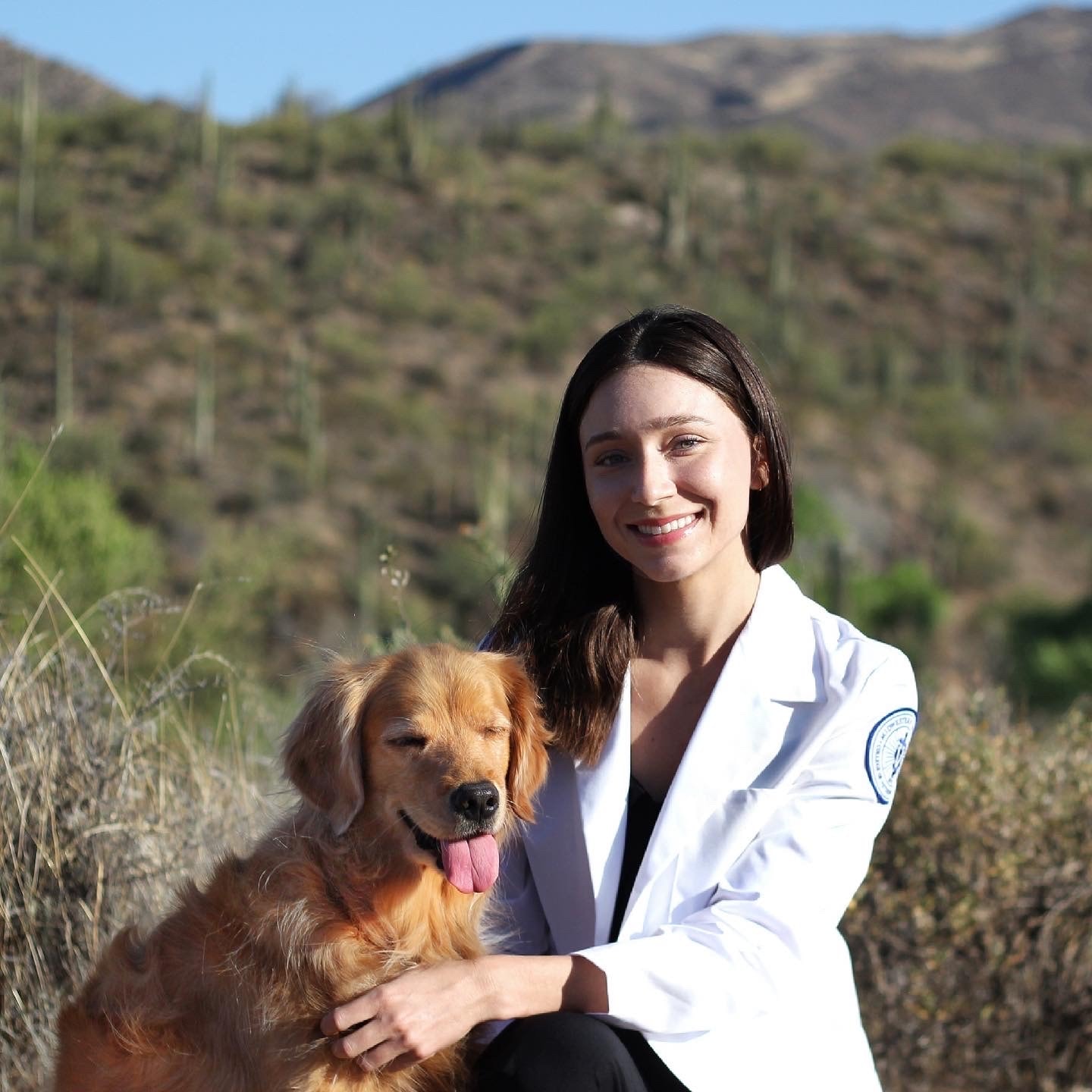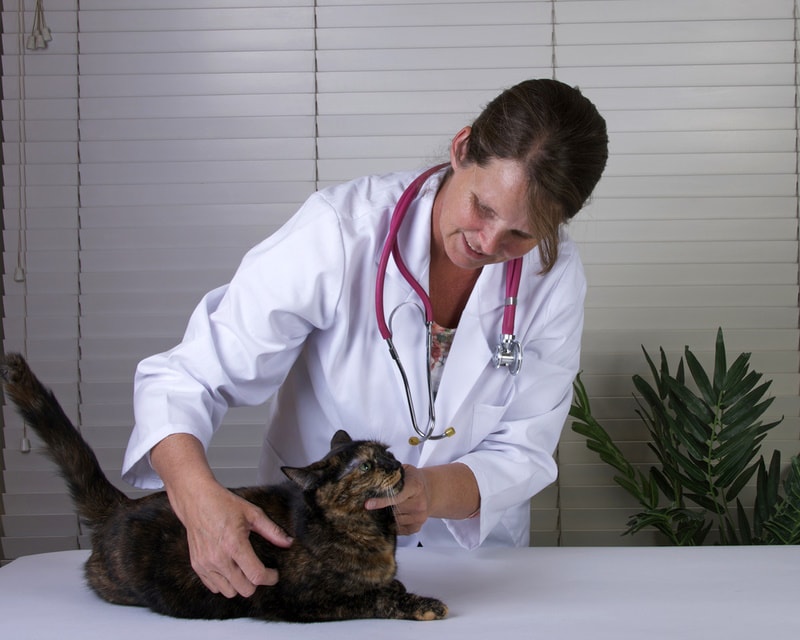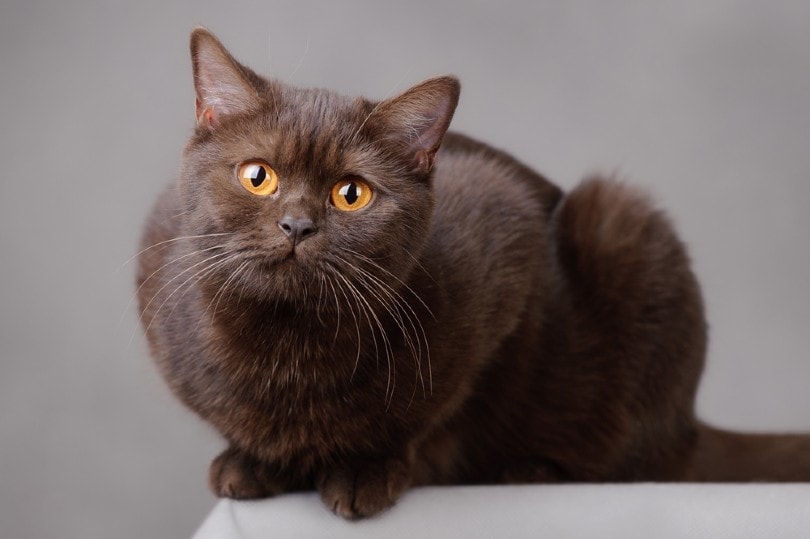10 Common Ragdoll Cat Health Problems: Vet-Reviewed Facts
Updated on
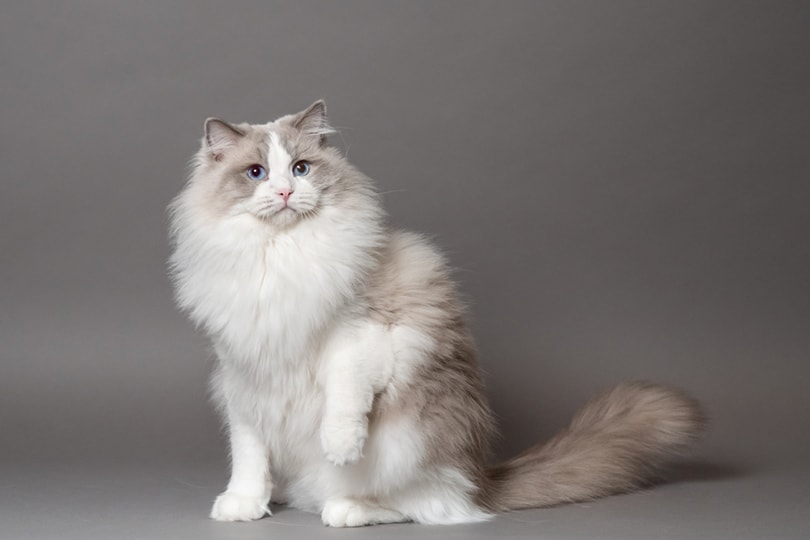
The Ragdoll is a large and beautiful breed of domesticated cat known for its affectionate nature and charming appearance. The Ragdoll is a gentle yet playful cat that is adored by many cat lovers. However, like most cat breeds, they come with a range of health and behavioral issues.
Ragdolls are especially prone to developing one of the common problems we have listed below because this feline can live for a very long time, roughly 18 to 20 years. Common problems that occur in Ragdoll cats can stem from certain behaviors associated with this cat breed, along with a variety of medical conditions that need veterinary treatment and diagnosis.
This means that you should be aware of any possible problems you may encounter when owning this cat breed along with the symptoms you need to look out for.
The 10 Ragdoll Cat Health Problems
1. Polycystic Kidney Disease (PKD)
- Weakness
- Loss of appetite
- Malaise
- Lethargy
- Increased thirst
- Frequent urination
- Weight loss
Ragdoll cats seem to have fewer kidney cells in comparison to other cat breeds, which makes them susceptible to developing polycystic kidney disease and other kidney issues. This is a progressive disease that consists of three stages that impact the kidneys, which in turn affect this cat’s metabolism, but can be handled by lowering the blood sugar levels in diabetic Ragdoll cats.
The signs can mimic feline diabetes. A veterinarian can run tests to differentiate between the two. For treatment, a veterinarian will put your cat on a kidney disease program and change their diet to eliminate excess protein that will cause further kidney damage. Another treatment option is dexamethasone which helps stop the development of polycystic kidneys.
2. Urinary Tract Infections (UTI)
- Difficulty urinating
- Foul-smelling urine
- Blood in urine
- Excessive genital licking
- Constant urge to urinate
- Abnormal urine leaking or not peeing fully
Urinary tract infections in Ragdoll cats can occur from bacteria (such as Streptococcus or Lactobacillus) in the urinary tract. This is an uncomfortable infection that can be successfully treated with antibiotics from a veterinarian. It occurs when harmful bacteria travel up the urethra and into the bladder.
This makes your Ragdoll vulnerable to a variety of additional health issues such as bladder stones. You may notice that your cat is struggling to urinate properly, and they can either pass a little amount of urine at a time or no urine at all even if they are straining. This can lead to frequent accidents around the home.
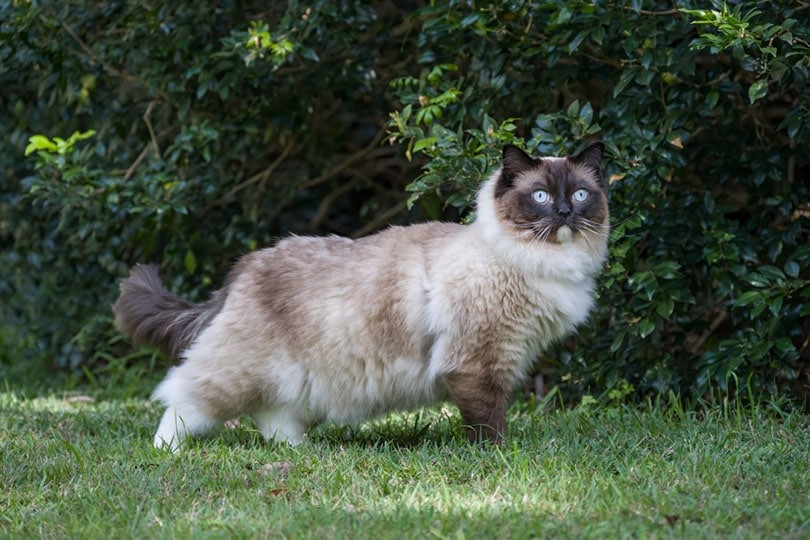
3. Obesity
A Ragdoll cat suffering from obesity will have a lot of excess belly fat along with adipose tissue on its legs, head, neck, and in some cases around its face. Your vet will be able to tell if your Ragdoll is overweight and recommend a diet change or increase in the amount of exercise your cat does. Since this is a typically lazy cat that is not as athletic as other cat breeds, if they are fed the wrong diet or have an underlying health condition, then they are at risk of becoming obese.
Obesity puts your Ragdoll at risk of developing other health conditions, so it is important to ensure that they are getting enough exercise through gentle playtime and exploring while ensuring that their diet does not contain an excessive amount of fats that could be contributing to their chunky appearance.
4. Hypertrophic Cardiomyopathy
- Excessive coughing
- Difficulty breathing
- Wheezing
- Weakness
- Vomiting
- Flaccidity in the rear limbs
- Appetite changes
This is a condition that thickens the heart walls of a Ragdoll cat and can be fatal if left untreated, resulting in heart failure and eventually death. The thickening of the myocardial mass in the left ventricle causes a decrease in the volume of ventricles in the cat’s heart.
There is no direct cure for this condition, which makes it essential to have your Ragdoll regularly tested by a veterinarian so that they can pick up on this condition in the early stages.
5. Inflammatory Bowel Disease (IBD)
- Straining when pooping
- Blood in stools
- Vomiting
- Weight loss
- Lethargy
- Diarrhea or constipation
- Changes in appetite
Intestinal inflammation is the main cause of IBD in Ragdoll cats. This is a condition where a cat’s gastrointestinal tract becomes chronically inflamed and irritated, especially if they are eating foods that do not settle well in their stomachs. The inflammatory cells infiltrate the digestive tract causing thickening and disrupting the cat’s ability to properly digest and absorb the nutrients from the food they are eating. If the stomach becomes inflamed, your Ragdoll can develop gastritis.
Treatment from a veterinarian typically includes dietary changes so that your Ragdoll is not eating foods that cause a flare-up in their sensitive stomachs along with various medications to treat the inflammation and discomfort your cat feels.
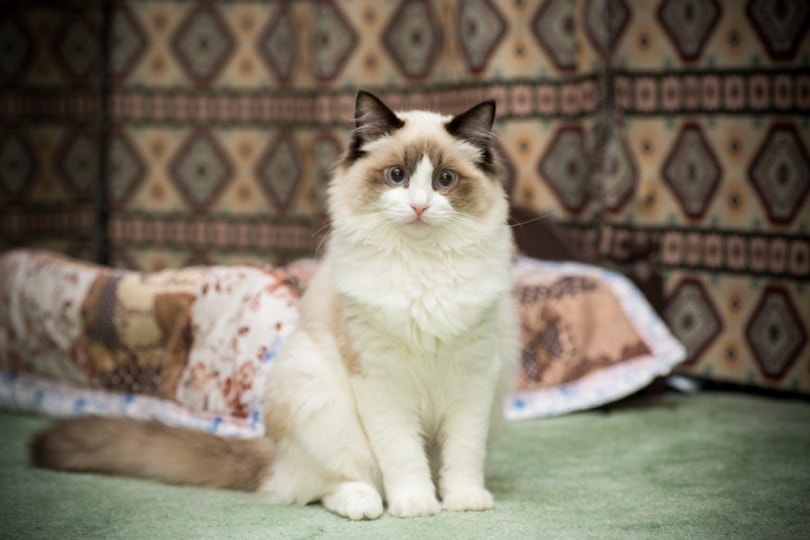
6. Gastrointestinal Disorders
- Vomiting
- Diarrhea
- Lethargy
This cat breed is prone to developing problems that affect its gastrointestinal tract. This can occur from gastroenteritis caused by feline enteritis, obstructions in their bowels, food poisoning, and poor diet. The main signs your cat will show are vomiting and diarrhea. Ragdoll cats are also known to have very sensitive stomachs, which can be triggered by certain foods or constant stress.
Gastroenteritis in Ragdolls will show up as abdominal pain, lethargy, changes in appetite, along with weight loss. It is important to have your Ragdoll on the right diet and to avoid giving them trigger foods and treats that will upset their sensitive stomachs.
7. Vision Issues
- Enlarged liver
- Stunted growth
- Small ears
- Flattened face
- Cataracts
- Mental stunting
- Skeletal abnormalities
Ragdoll cats are highly prone to problems with their vision, such as cataracts or blindness caused by genetics or a herpes virus that causes an upper respiratory infection in cats. Cataracts in this breed can develop from the ages of 2–3 years old; however, it is more likely to affect older Ragdolls.
The vision issues most Ragdolls encounter are passed on genetically from the mother cat to her kittens and it is referred to as mucopolysaccharidosis. This is where a group of lysosomal storage disorders in Ragdolls is caused by a deficiency of specific enzymes required to degrade glycosaminoglycans. These vision issues can be seen in Ragdoll kittens from as young as 6 to 8 weeks of age. Kittens affected by this condition will show a range of other symptoms alongside their vision loss.
A Ragdoll suffering from typical vision loss caused by old age will not need to go under treatment, and they can live a normal life. However, cats with feline mucopolysaccharidosis may need to undergo surgery, bone-marrow transplants, or an enzyme replacement to help correct some of this condition’s symptoms.
8. Gum and Tooth Disease
- Jaw pain
- Abnormal gum color
- Foul breath
Dental problems are quite common in older Ragdoll cats and they can have infected gums. Your Ragdoll will experience jaw pain and a sudden change in their gum and tooth health. Their gums may turn an abnormal color and infections from gum disease may also cause their mouth to smell foul.
Ongoing gum disease can cause lesions on the soft membranes in their mouth and on their tongue, which can overall affect the health and placement of their teeth. A veterinarian will diagnose and treat your cat with pain medication and an antibiotic if the gum disease is caused by an infection. In some cases, certain teeth may have to be removed if there is extensive damage to the underlying gums.
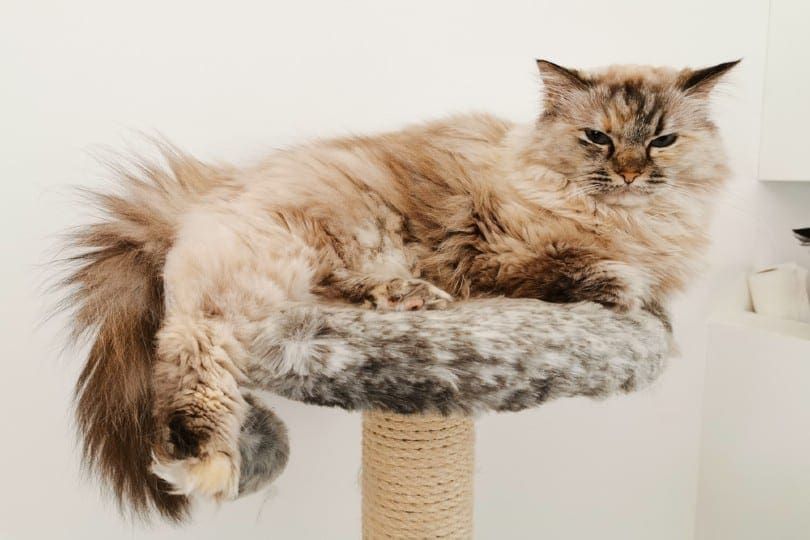
9. Excessive Grooming and Licking
Ragdoll cats sometimes excessively groom themselves, especially if they are fed a diet that is not supplementing their skin and coat, causing it to become dry. The excessive grooming can also cause an increase in the number of hairballs your Ragdoll regurgitates because the long fur accumulates quickly.
Luckily, it is easy to brush and groom this cat regularly to help remove loose hair and any knots. The fur is not digestible which is why so many Ragdoll cat owners face the challenge of having a cat that produces a lot of hairballs.
10. Prone to Finicky Eating Habits
Most Ragdoll cat owners will come to find that their cat is quite picky with the food that they eat. Some might shy away from certain foods if the texture, taste, or smell does not appeal to them.
Since Ragdoll cats are also prone to various health issues such as obesity and kidney issues, it is important to consult with a cat nutritionist or veterinarian so that you can find the right diet for your Ragdoll and any conditions they might have. You might want to first buy samples of different foods to see which one your cat likes before purchasing a specific food in bulk.
Some Ragdolls may also go on a “food protest,” which means they will stop eating a specific food even if it is one that they have been eating for a while. However, it is important to check with a veterinarian to determine if your Ragdoll is possibly experiencing a health problem that will cause them to lose their appetite.
Conclusion
Although the Ragdoll is prone to a variety of different problems regarding their health and behavior, most Ragdolls can remain relatively healthy throughout their long lifespan without encountering one or more of these issues.
Keep in mind that these health problems can affect most types of cat breeds; it just seems to be more prevalent in Ragdolls. This cat breed can be kept healthy and happy if they are fed the correct diet, regularly get checked at the vet, and are encouraged to remain active.
See also:
- Do All Ragdoll Cats Have Blue Eyes? Is It Typical?
- Can Ragdoll Cats Be Left Alone? What You Need to Know!
Featured Image Credit: madeinitaly4k, Shutterstock
